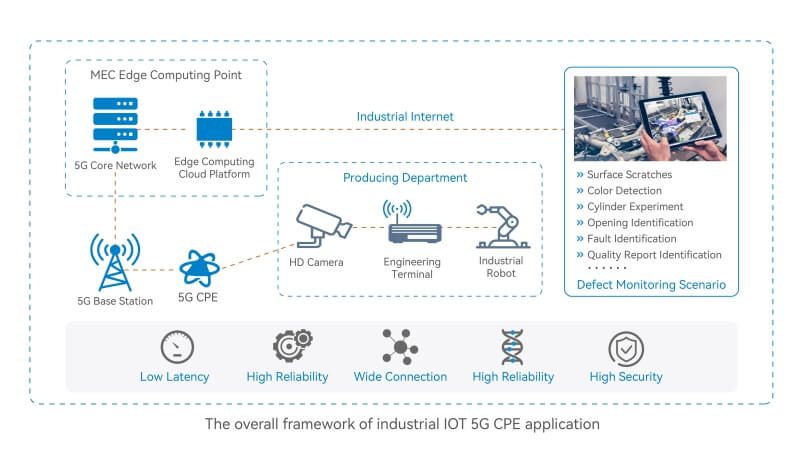What is 5G CPE: Features, Comparison and Solution
What is 5G CPE: Features, Comparison and Solution
The EPON OLT is a device serving as the endpoint for the service provider in a passive optical network. In other words, the Optical Line Terminal (OLT) manages the Ethernet Passive Optical Network (EPON). This technology offers multiple services thanks to its point-to-multipoint passive optical transmission.
1. What is 5G CPE?
5G CPE (Customer Premise Equipment) is a 5G terminal device, which aims to enable more user devices, such as mobile phones, iPads or PCs, to connect to the internet in receiving the 5G signals emitted by the 5G base station, then transferring them into WiFi signals or wired signals.
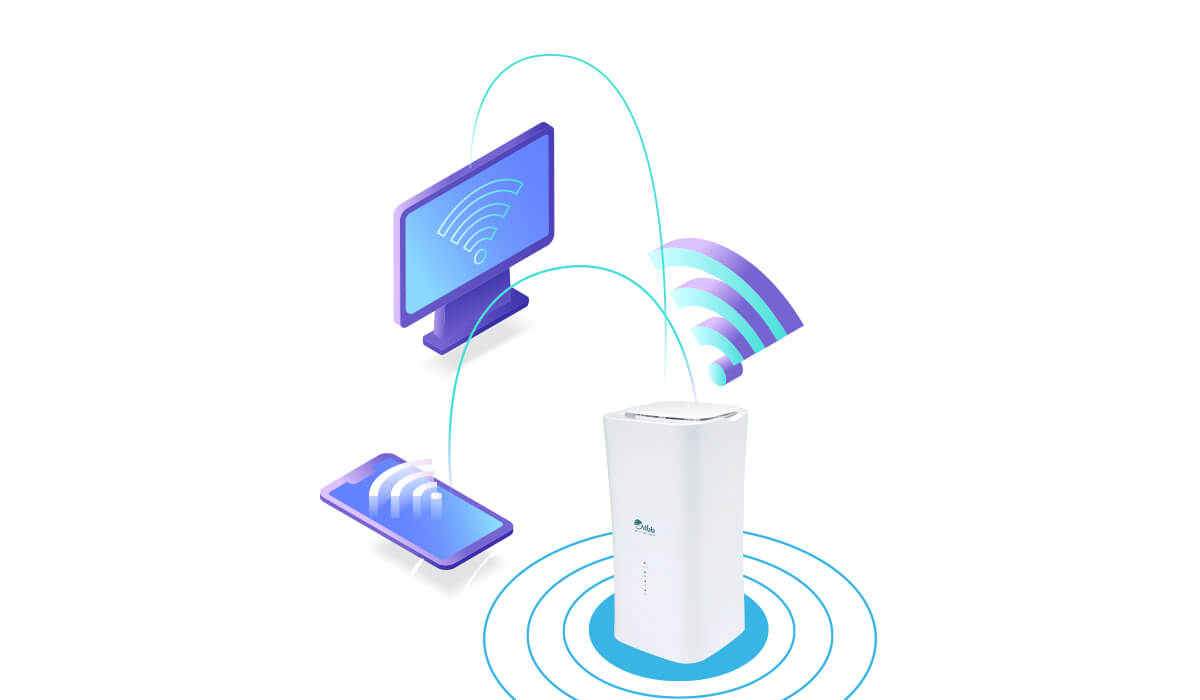
We can think of 5G CPE as a small base station or a combination of router and mobile WiFi. When some corners of your home/business cover weak signal or when you go to remote areas like mountains, you can use 5G CPE to improve or cover signals. Besides, it is easy to carry and users can connect to the Internet anytime and anywhere.
Someone may think that 5G CPE is similar to mobile WiFi or router. In reality, they are different. In the next part, we will make a detailed comparison to help you learn CPE well.

2. Why choose 5G CPE?
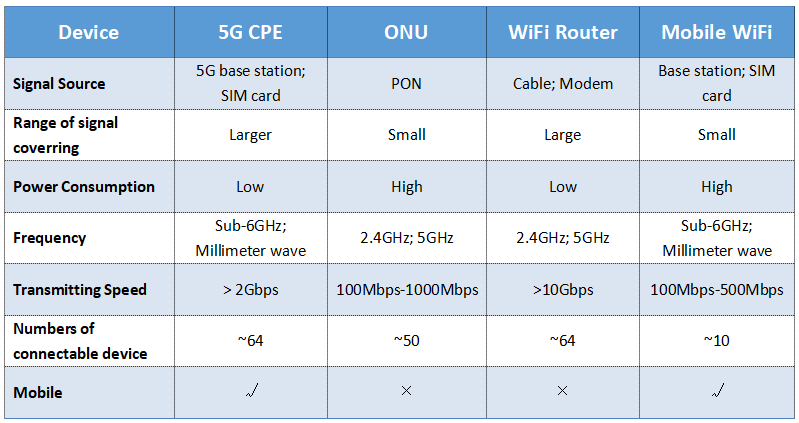
1. 5G CPE vs ONU
Exactly, the UN also belongs to the CPE. But the ONU connects to the access devices via optical fiber and the 5G CPE connects to the 5G base station. 5G CPE adopts 5G chips similar or the same as 5G mobile phones, which have powerful 5G connection capability, supporting SA/NSA and 4G/5G networks. Its speed is equivalent to that of the UN. However, compared to the UN, the CPE is more flexible and mobile. In some sparsely populated areas, it is difficult and expensive to deploy optical fiber. Therefore, these areas still have access to the Internet by installing outdoor CPEs to receive and convert base station signals to local signals.
2. 5G CPE vs WiFi router
5G CPE is a combination of 5G modem and WiFi router. Devices can access the Internet by connecting to the WiFi or LAN port of the CPE by inserting the 5G SIM card. In contrast, WiFi router is a WiFi signal projector that connects to modem, router or switch via cables. Then, smart devices are able to receive WiFi signals and acquire the network. The WiFi router cannot provide the network if there is no cabling.
3. 5G CPE vs Mobile WiFi
In fact, 5G CPE can be considered an improved version of mobile WiFi. But the antenna gain of 5G CPE is greater. The signal receiving and transmitting ability of 5G CPE is also more powerful than that of mobile phone, which makes 5G CPE used in outdoor 5G application testing. In addition, 5G CPE is faster in transmission, covering a larger area and supporting many more devices.
4. 5G CPE vs. wired network
It is obvious that setting up the cable network, from cable deployment to installation, must cost a long time and expense. It is also not necessary to do this for some people on short rentals or traveling. These unnecessary costs will be saved by using 5G CPE. It is easy to implement and allows plug and play.
Conclusion
Overall, 5G CPE perfectly integrates the low cost of WiFi with high bandwidth. Below are three main features:
● Flexible and mobile: Different from ONU and WiFi router which are fixed in one place, 5G CPE is easy to carry and can be taken anywhere it covers 5G signals.
● Convenient and low cost: With the SIM card, the 5G CPE router allows you to surf the Internet. No expense and time required cost like other ways.
● Equivalent performance: 5G CPE is comparable to ONU/WiFi/mobile router, whether in terms of transmission speed, connectable devices or coverage range.
2. ELFCAM 5G CPE solution: Wireless home broadband

Besides using 5G CPE to solve weak signal problems indoors or outdoors, 5G CPE is also well applied in the establishment of wireless home broadband and industrial IoT. ELFCAM offers a solution adapted to its 5G CPE equipment.
Outdoor 5G CPE with mesh network:
The following image is the framework for setting up home broadband with ELFCAM's XGC5552 outdoor CPE and HG3610ACM WiFi mesh router. Let's get to know these two products first.
① 5G XGC5552 Outdoor CPE
● The download rate reaches 3,5Gbps.
● It supports PoE power supply.
● There is a 2,5 gigabit LAN port.
● The 5G CPE device can be installed on the walls or pole, which can withstand terrible weather conditions, whether rain or high temperature.
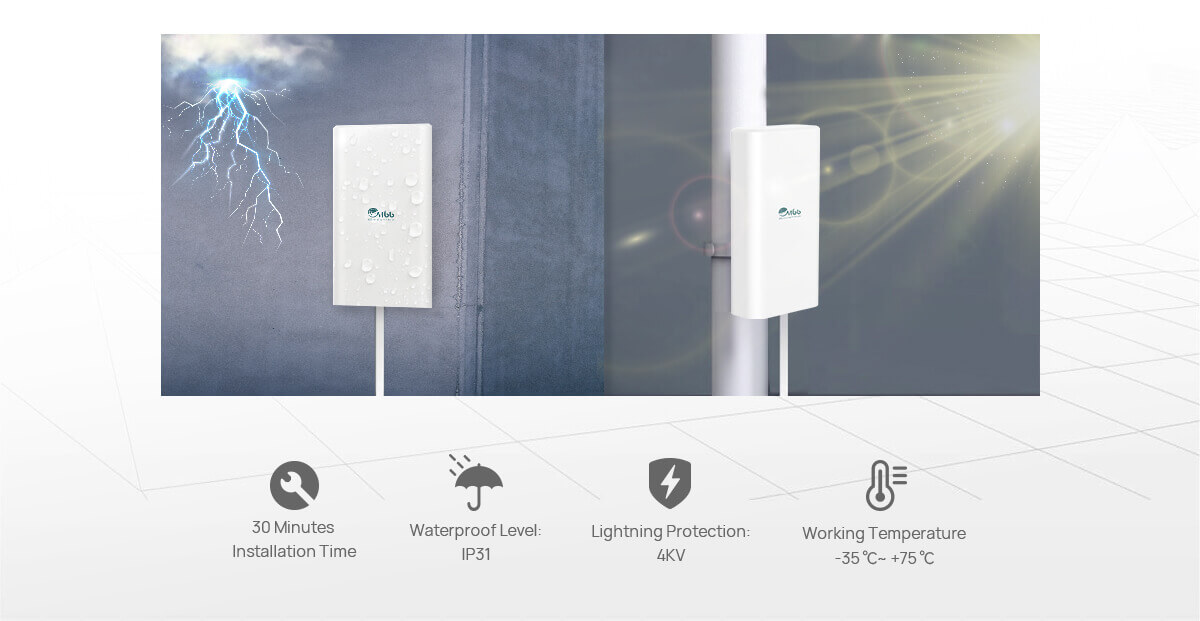
② HG3610ACM WiFi Mesh Router
● It has two WAN/LAN ports and 12V/1A DC power supply.
● It supports dual bands of 2,4GHz and 5GHz with a combined throughput of 1,2Gbps including 300Mbps at 2,4GHz and 867Mbps at 5GHz.
● On-chip PA and LNA improve signal coverage and stability.
● 4 high gain antennas make the signal stronger and the maximum number of connecting devices reaches up to 128.
As we can see in the picture, the 5G outdoor CPE receives 5G signals from the 5G base station. Then it transmits the electrical signals to the wifi mesh router by connecting the two devices with a cable. This wifi mesh router also works as a primary router. There are several wifi mesh routers placed around your house, which are slave routers. These mesh wifi routers in your home will set up the mesh wifi network. In this way, a wireless home network is successfully created.
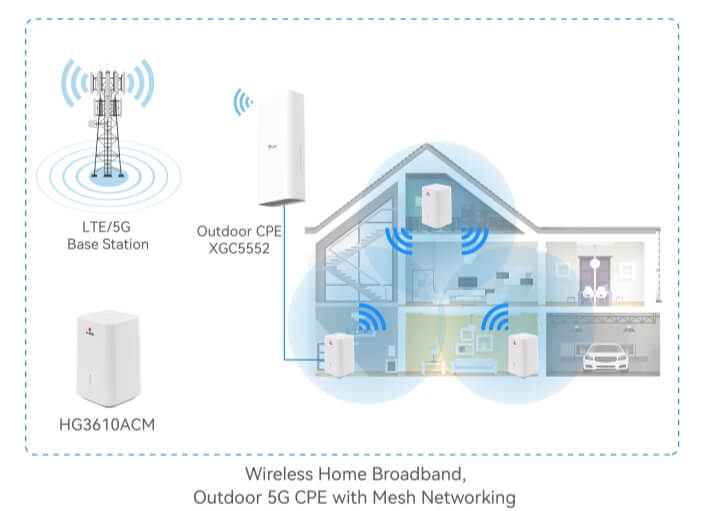
Compared with traditional cabling network or fiber optic access network, isn't it much more convenient and faster?
In addition to being applied in testing various 5G occasions, 5G CPE can also be used in industrial IoT like smart factory. With the combination of MEC edge computing point involving 5G core network and edge computing cloud platform, industrial Internet can be connected and applied in more sensing or monitoring demands. The unlimited potential of 5G CPEs must be explored.
